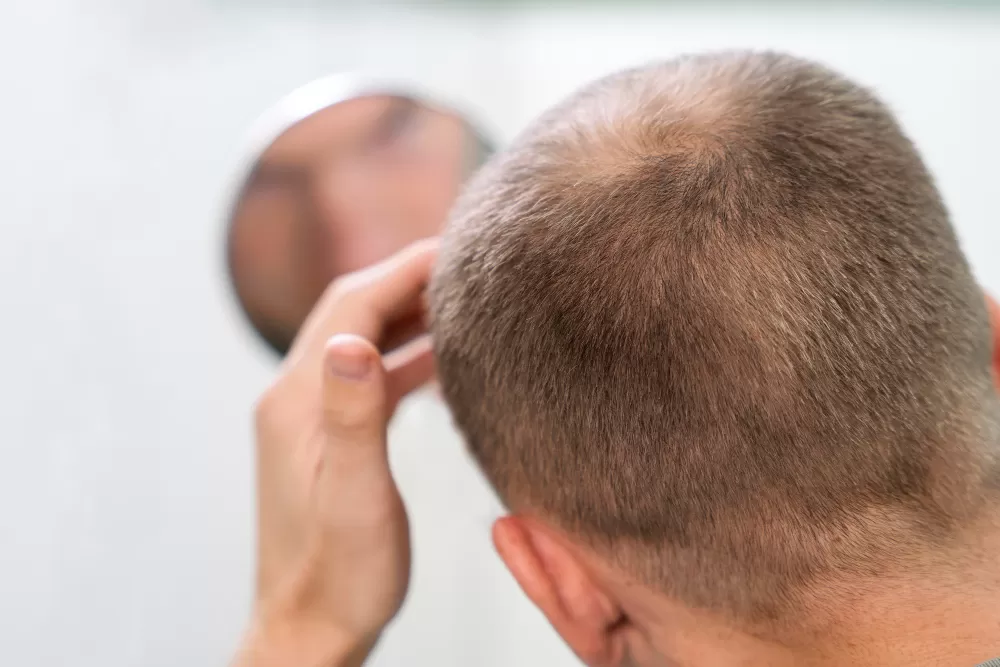A hair transplant is a popular solution for hair loss, offering permanent results. However, the success of the procedure depends heavily on the recovery process. Proper care and patience are essential for optimal outcomes. This guide provides a detailed overview of the hair transplant recovery process, key considerations, and answers to frequently asked questions.
What is a Hair Transplant and Why is it Popular?
A hair transplant involves transferring hair follicles, typically from the back of the head (donor area), to areas with thinning or no hair. Modern techniques like FUE (Follicular Unit Extraction) and DHI (Direct Hair Implantation) ensure natural, long-lasting results. People opt for hair transplants to address aesthetic concerns, boost confidence, and achieve a permanent solution to hair loss.
Hair Transplant Techniques
FUE Technique: Individual hair follicles are extracted and implanted. It’s minimally invasive with a faster recovery time.
DHI Technique: Uses a specialized pen to directly implant follicles, ideal for denser transplants.
Sapphire FUE: A variation of FUE using sapphire blades, causing less tissue damage and promoting quicker healing.
Hair Transplant Recovery Process
The recovery process after a hair transplant unfolds in stages. Adhering to your doctor’s instructions and maintaining patience are critical for success.
First 24-48 Hours: The Critical Phase
The initial 48 hours post-procedure are the most sensitive. Key considerations include:
Rest: Avoid pressure on the scalp and sleep on your back.
Avoid Contact: Do not touch or rub the transplanted area.
Swelling and Redness: Mild swelling or redness is normal and can be managed with prescribed medications.
First Week: Crusting and Initial Care
The first week marks the onset of crusting and early healing. During this period:
First Wash: Typically done on day 3, either at the clinic or following your doctor’s instructions, using special lotions and shampoos.
Itch Management: Mild itching is common but avoid scratching.
Activity Restrictions: Refrain from heavy exercise, saunas, or swimming.
Weeks 2-4: Shock Loss Phase
Between weeks 2 and 4, some transplanted hair may fall out, known as “shock loss.” This is a normal part of the process.
What is Shock Loss?: Transplanted follicles enter a resting phase, causing temporary shedding. The roots remain intact, and new hair will grow.
Skin Recovery: Crusting resolves, and the scalp regains its normal appearance.
Care Routine: Continue using prescribed lotions and vitamin supplements.
Months 3-6: New Hair Growth
From months 3 to 6, new hair begins to emerge from the transplanted follicles. Initially, the hair may appear thin but will thicken over time.
Hair Growth: Hair grows naturally and gains volume.
Sun Protection: Protect the sensitive scalp from sun exposure.
Patience: Results vary between individuals, so patience is key.
Months 6-12: Final Results
By 6 to 12 months, the hair achieves its full, natural appearance. During this phase:
Density and Natural Look: Hair becomes thicker and more voluminous.
Styling Freedom: Hair can be cut and styled as desired.
Ongoing Care: Maintain regular care to support hair health.
Post-Hair Transplant Care Tips
To accelerate recovery and prevent complications, follow these guidelines:
Nutrition and Hydration
Healthy Diet: A diet rich in protein, vitamins (especially B and E), and minerals supports hair growth.
Hydration: Drink at least 2 liters of water daily to maintain scalp moisture.
Sleeping Position
Sleep with your head elevated for the first week to reduce swelling.
Avoid sleeping face-down.
Alcohol and Smoking
Smoking: Impairs blood circulation, slowing healing. Avoid smoking for at least 2 weeks.
Alcohol: Refrain from alcohol for the first week, as it can thin the blood.
Exercise and Physical Activity
Avoid strenuous exercise for the first 2 weeks.
Light activities can resume after 1 month, with doctor approval.
Potential Complications and Solutions
Hair transplants are generally safe, but complications can occur. Common issues include:
Infection: Rare but possible if hygiene protocols are ignored. Treated with antibiotics.
Swelling: May occur around the forehead or eyes. Managed with cold compresses and medication.
Follicle Loss: In rare cases, transplanted follicles may not take. Consult your doctor for evaluation.
Post-Transplant Care Products
Products recommended by your doctor can enhance recovery. Common items include:
Special Shampoos: Formulated for sensitive scalps.
Lotions: Soften crusts and moisturize the scalp.
Vitamin Supplements: Biotin, zinc, and iron supplements promote hair growth.
Frequently Asked Questions (FAQ)
When will hair grow after a hair transplant?
New hair typically begins to grow between 3-6 months. Full results are visible within 12-18 months.
What is shock loss, and is it normal?
Shock loss is the temporary shedding of transplanted hair, which is normal. The follicles remain intact, and new hair will grow.
When can I resume exercise after a hair transplant?
Light exercise can resume after 2-3 weeks. Wait at least 1 month for strenuous activities.
How can I manage itching after a hair transplant?
Itching is normal but avoid scratching. Use prescribed lotions or antihistamines as recommended.
Why is sun protection important after a hair transplant?
Sun exposure can harm the sensitive scalp and hinder recovery. Use a hat or sunscreen for protection.





No comments yet. Be the first to comment!